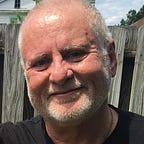Four Dead In Ohio
Forty seven years ago today, on a spring day in eastern Ohio, the Sixties came to an end. On the campus of Kent State University, four students were murdered in what became known as the Kent State Massacre.
Like other students around the country, these kids were protesting Richard Nixon’s illegal and unnecessary invasion of Cambodia that had begun on April 29th. It was just one more protest in a tsunami of protests that closed or paralyzed campuses all over America. It seemed the Vietnam War would never end. It had divided the country as no other issue in its history had ever done before.
National Guardsmen fired 67 shots in 13 seconds into a crowd of protesters. When the sound of the shooting ended at Kent State ended, four unarmed students lay dead, nine more were wounded. All were white, all were middle class.
The dominant power structure of the US made its point. Enough was enough. It demonstrated that to protect its interests, it would murder its own children. It told the baby boomers to get over their counter cultural nonsense and get back in line.
Although it seemed unlikely, Kent State was the perfect place to deliver the message. It wasn’t Berkeley or Columbia. It was a nearly all white, middle class, suitcase college in the heartland, where many students were the first in their families to go to college, many of whose parents worked in the mills and factories of the solid Midwest. They were not the children of the elite or privileged.
I had been visiting a friend who attended there and had left the campus just a few days before the shootings. Take away the hair, drugs and music, and KSU students were as American as apple pie, just kids going to school to graduate and get better jobs than their parents. Hardly hardcore radicals.
If their own government would murder them, no one was safe. Kent State was a blood sacrifice to capitalism and the military industrial complex. A great deal of money had been made from the war. Spoiled, long haired, drug taking hippie protesters had disrupted the country and threatened that revenue. Kent State, where few fit that description, was a perfect target. Two of the dead students had not participated in the protest and were shot down as they walked to class.
The murders galvanized the antiwar movement, if briefly. Over half a million kids poured into Washington after the shootings for one of the largest mass protests in American history. But the message had been heard. Over the next few years, as the war wound down, the movement and the counterculture faded away.
In the great tradition of Nixon era cover ups, no one was ever held responsible. Although it ran against military logic and law, which holds every commander absolutely responsible for the actions of his soldiers, no Guardsman was ever court-martialed or punished. Nor was any member of the Ohio state government.
When I heard of the shootings, I was nearly speechless with rage. How could this possibly happen in my country? But just two years later I would be in Vietnam for the war’s last gasp.
The Sixties were like that. Everything was topsy-turvy, new, exciting and confusing. For a while, anything seemed possible, right up to changing the world.
But on May 4th, 1970, that changed. Although not immediately apparent, unlikely Kent State was the high water mark of the Sixties. The voice of authority had spoken with rifles. Blood spilled. The voice said, get back in line. Slowly, we did.
If you like this piece, and can afford it, please consider sending me a buck or two at Paypal. I’m saving up for MIT in my next life…
